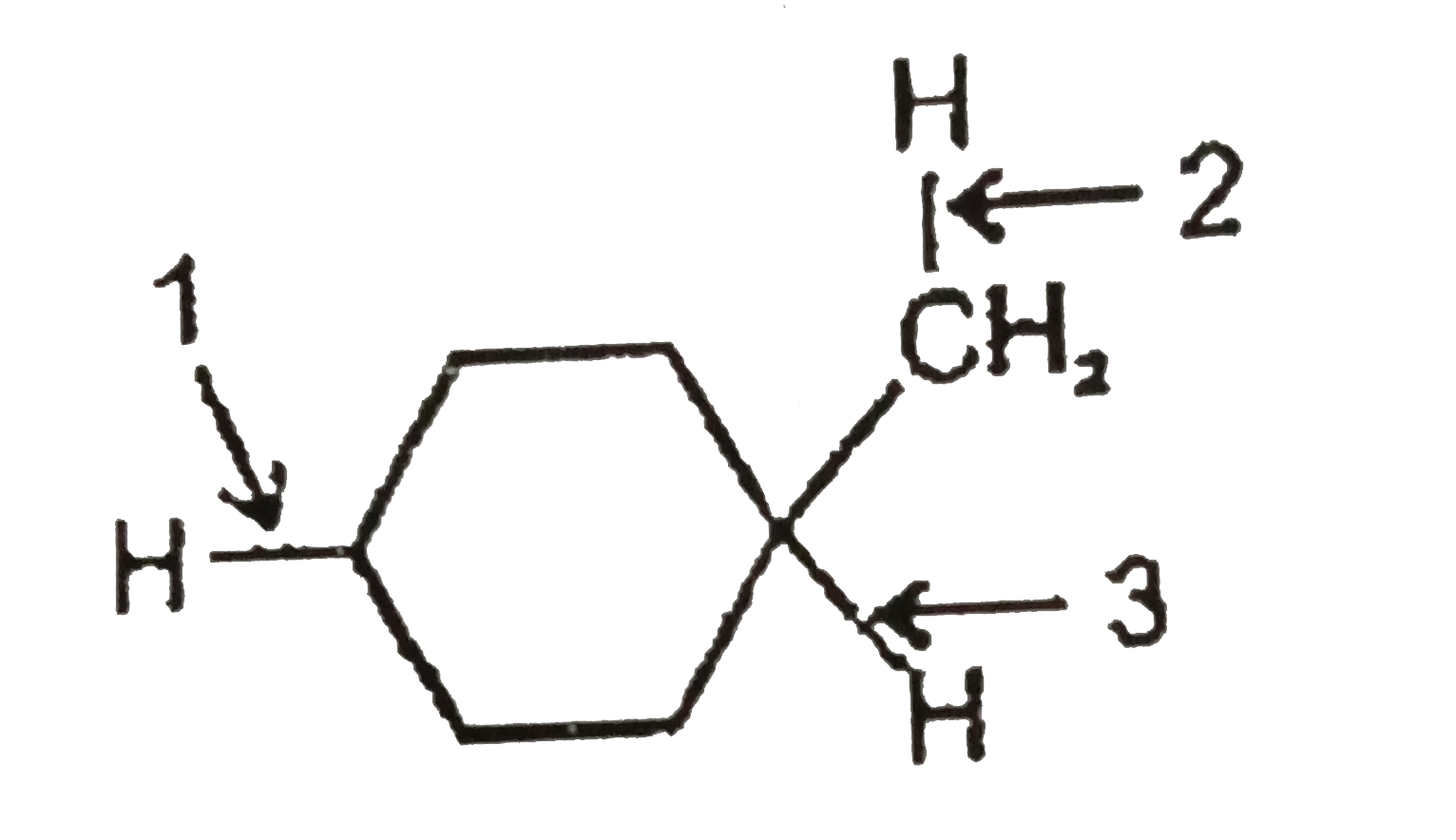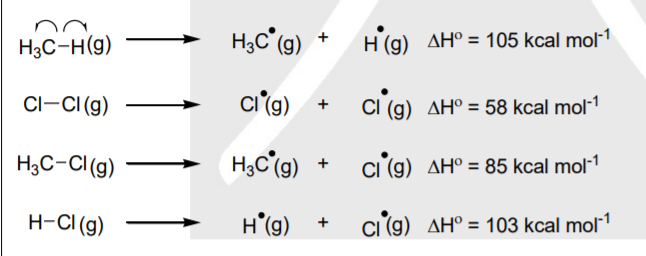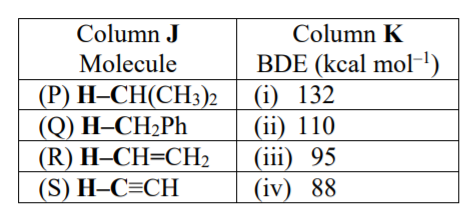The bond dissociation energy needed to form the benzyl radical from toluence is……….. Than the formation of the methyl radical from methane.
Lesser
Higher
Equal
Insufficient data
The correct Answer is:A
Less
Topper's Solved these Questions
- BOOK - CENGAGE CHEMISTRYCHAPTER - GENERAL ORGANIC CHEMISTRYEXERCISE - Analytical and Descriptive1videos
GENERAL ORGANIC CHEMISTRY
- BOOK - CENGAGE CHEMISTRYCHAPTER - GENERAL ORGANIC CHEMISTRYEXERCISE - Archives12videos
GENERAL ORGANIC CHEMISTRY
- BOOK - CENGAGE CHEMISTRYCHAPTER - CLASSIFICATION AND NOMENCLATURE OF ORGANIC COMPOUNDSEXERCISE - Analytical and Descriptive Type3videos
CLASSIFICATION AND NOMENCLATURE OF ORGANIC COMPOUNDS
- BOOK - CENGAGE CHEMISTRYCHAPTER - HYDROGEN, WATER AND HYDROGEN PEROXIDEEXERCISE - Subjective Archive (Subjective)3videos
HYDROGEN, WATER AND HYDROGEN PEROXIDE
Similar Questions
The bond dissociation energy needed to form the benzyl radical from toluence is……….. Than the formation of the methyl radical from methane.
View SolutionExplain each statement using resonance theory.
(a) The indicated C−H bond in propene is more acidic than the indicated C−H bond in propane.

(b) The bond dissociation energy for the C−C bond in ethane is much higher than the bond dissociation energy for the indicated C−C bond in 1-butene.
 View Solution
View Solution
Knowledge Check
- Question 1 - Select One
The bond dissociation energy needed to form the benzyl radical from toluence is……….. Than the formation of the methyl radical from methane.
ALessBMuchCEqualDNone of the above - Question 2 - Select One
Rank the bond dissociation energies of the bonds indicated with the arrows, (from smallest to largest)
 A1<2<3B3<2<1C2<3<1D3<1<2
A1<2<3B3<2<1C2<3<1D3<1<2 - Question 3 - Select One
Root develop from radical
AFibrous rootBRespiratory rootCAdventitious rootDTap root
The amount of energy required to break a bond is same as the amount of energy released when the same bond is formed. In gaseous state, the enrgy required for hololytic cleavage of a bond is called Bond Dissociation Energy(BDE) or Bond Strength. BDE is affected by s-character of the bond and the stability of the radicals formed. Shorter bonds typically stronger bonds. BDEs for some bonds are given below:

Correct match of the C-H bonds(shown in bold) in column J with their BDE in column K is View Solution
View SolutionThe amount of energy required to break a bond is same as the amount of energy released when the same bond is formed. In gaseous state, the enrgy required for hololytic cleavage of a bond is called Bond Dissociation Energy(BDE) or Bond Strength. BDE is affected by s-character of the bond and the stability of the radicals formed. Shorter bonds typically stronger bonds. BDEs for some bonds are given below:

For the following reaction
CH4(g)+Cl2(g)light−−→CH3Cl(g)+HCl(g)
the correct statement isView SolutionWhy is bond dissociation energy of fluorine molecule less than that of chlorine molecule ?
View SolutionRoots developing from plants other than radical are
View SolutionThe bond dissociation energies of X2,Y2 and XY are in the ratio of 1:0.5:1.ΔH for the formation of XY is −200kJmol−1.The bond dissociation energy of X2 will be
View Solution

